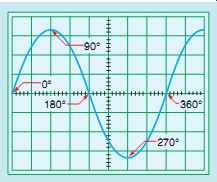AMAZON multi-meters discounts AMAZON oscilloscope discounts
OBJECTIVES:
• discuss differences between direct and alternating current.
• be able to compute instantaneous values of voltage and current for a sine wave.
• be able to compute peak, RMS, and average values of voltage and current.
• discuss the phase relationship of voltage and cur rent in a pure resistive circuit.
ALTERNATING CURRENT TERMS:
- amplitude -- the maximum height reached by a waveform
- average -- the value of voltage when an AC sine wave voltage is changed to DC
- cycle --one cycle is completed when an AC voltage completes 360 degrees
- frequency -- the number of complete cycles that occur in one second
- hertz (Hz) a measure of frequency
- in phase--a condition that occurs when the voltage and current reach peak values and zero crossing at the same time
- linear wave--a waveform that increases in the same proportion as the angle of rotation
- oscillators devices used to convert direct current into alternating current
- peak-- the maximum value obtained by a waveform
- resistive loads--loads that employ resistance to limit circuit current
- ripple-- the turning on and off effect that occurs when alternating current is converted into direct current
- root mean square (RMS)--the amount of AC voltage that will produce the same heating effect as a like amount of DC voltage
- sine wave-- a waveform produced by any rotating machine. The voltage at any point on the waveform can be determined by multiplying the peak value by the sine of the angle of rotation
- skin effect --the effect that causes electrons to move toward the outside of a conductor in an alternating current circuit
- triangle wave-- a linear waveform in which the voltage is proportional to the peak value and percent of angle of rotation
- watts --a measure of electric power
---------------------------
Most of the electrical power produced in the world is alternating current. It is used to operate everything from home appliances such as television sets, computers, microwave ovens, and electric toasters, to the largest motors found in industry. Alternating cur rent has several advantages over direct cur rent that make it a better choice for the large-scale production of electrical power.
ADVANTAGES OF ALTERNATING CURRENT
Probably the single greatest advantage of alternating current is that AC current can be transformed and DC current cannot. A transformer permits voltage to be stepped up or down. Voltage can be stepped up for transmission and then stepped back down when it is to be used by some device. Transmission voltages of 69 kV, 138 kV, and 345 kV are common. The advantage of high-voltage transmission is that less current is required to produce the same amount of power. The reduction of current permits smaller wires to be used, which results in a savings of material.
In the very early days of electric power generation, Thomas Edison, an American inventor, proposed powering the country with low-voltage direct current. He reasoned that low-voltage direct current was safer for people to use than higher voltage alternating current. A Serbian immigrant named Nikola Tesla, however, argued that direct current was impractical for large-scale applications. The disagreement was finally settled at the 1904 World's Fair held in St. Louis, Missouri.
The 1904 World's Fair not only introduced the first ice cream cone and the first iced tea, it was also the first World's Fair to be lighted with "electric candles." At that time, the only two companies capable of providing electric lighting for the World's Fair were the Edison Company, headed by Thomas Edison, and the Westinghouse Company, headed by George Westinghouse, a close friend of Nikola Tesla. The Edison Company submitted a bid of over one dollar per lamp to light the fair with low-voltage direct current. The Westinghouse Company submitted a bid of less than 25 cents per lamp to light the fair using higher-voltage alternating current. This set the precedent for how electric power would be supplied throughout the world.
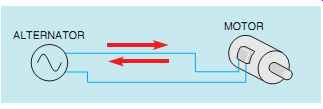
FIG. 1 Alternating current flows first in one direction and then
in the other.

FIG. 2 Square wave alternating current.
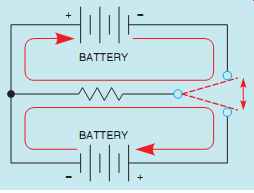
FIG. 3 Square wave alternating current produced with a switch and
two batteries.
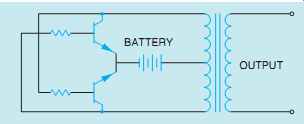
FIG. 4 Square wave oscillator.
AC WAVE FORMS SQUARE WAVES
Alternating current differs from direct current in that AC current reverses its direction of flow at periodic intervals (Fig. 1). Alternating current wave forms can vary depending on how the current is produced. One wave form frequently encountered is the square wave (Fig. 2). It is assumed that the oscilloscope in FIG. 2 has been adjusted so that 0 V is represented by the center horizontal line. The wave form shows that the volt age is in the positive direction for some length of time and then changes polarity. The voltage remains negative for some length of time and then changes back to positive again. Each time the volt age reverses polarity, the current flow through the circuit changes direction. A square wave could be produced by a simple single-pole double-throw switch connected to two batteries as shown in FIG. 3. Each time the switch position is changed, current flows through the resistor in a different direction. Although this circuit will produce a square wave alternating current, it is not practical.
Square waves are generally produced by electronic devices called oscillators. The schematic diagram of a simple square wave oscillator is shown in FIG. 4. In this circuit, two bipolar transistors are used as switches to reverse the direction of cur rent flow through the windings of the transformer.
TRIANGLE WAVES
Another common AC wave form is the triangle wave shown in FIG. 5. The triangle wave is a linear wave. A linear wave is one in which the voltage rises at a constant rate with respect to time. Linear waves form straight lines when plotted on a graph. For example, assume the wave form shown in FIG. 5 reaches a maximum positive value of 100 V after 2 ms. The voltage will be 25 V after 0.5 ms, 50 V after 1 ms, and 75 V after 1.5 ms.
SINE WAVES

FIG. 7 As the loop approaches 90° of rotation, the flux lines are
cut at a faster rate.
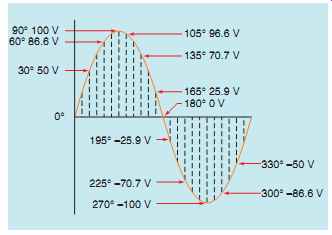
FIG. 8 Instantaneous values of voltage along a sine wave.
The most common of all AC wave forms are sine waves (Fig. 6). They are produced by all rotating machines. The sine wave contains a total of 360 electrical degrees. It reaches its peak positive voltage at 90°, returns to a value of 0 V at 180°, increases to its maximum negative voltage at 270°, and returns to 0 V at 360°. Each complete wave form of 360° is called a cycle. The number of complete cycles that occur in one second is called the frequency. Frequency is measured in hertz (Hz).
The most common frequency in the United States and Canada is 60 Hz. This means that the voltage increases from zero to its maximum value in the positive direction, returns to zero, increases to its maximum value in the negative direction, and returns to zero 60 times each second.
Sine waves are so named because the voltage at any point along the wave form is equal to the maximum, or peak, value times the sine of the angle of rotation. FIG. 7 illustrates one-half of a loop of wire cutting through lines of magnetic flux. The flux lines are shown with equal spacing between each line, and the arrow denotes the arc of the loop as it cuts through the lines of flux. Notice the number of flux lines that are cut by the loop during the first 30° of rotation. Now notice the number of flux lines that are cut during the second and third 30° of rotation. Because the loop is cut ting the flux lines at an angle, it must travel a greater distance between flux lines during the first degrees of rotation. Consequently, fewer flux lines are cut per second, which results in a lower induced voltage. Recall that 1 V is induced in a conductor when it cuts lines of magnetic flux at a rate of 1 Wb/s. One weber is equal to 100,000,000 lines of flux.
When the loop has rotated 90°, it is perpendicular to the flux lines and is cutting them at the maximum rate, which results in the highest, or peak, voltage being induced in the loop. The voltage at any point during the rotation is equal to the maximum induced voltage times the sine of the angle of rotation. For example, if the induced voltage after 90° of rotation is 100 V, the voltage after 30° of rotation will be 50 V because the sine of a 30° angle is 0.5 (100 x 0.5 = 50 V).
The induced voltage after 45° of rotation is 70.7 V because the sine of a 45° angle is 0.707 (100 x 0.707 = 70.7 V). A sine wave showing the instantaneous voltage values after different degrees of rotation is shown in FIG. 8. The instantaneous voltage value is the value of voltage at any instant on the wave form.
The following formula can be used to deter mine the instantaneous value at any point along the sine wave.
E(INST) = E(MAX) x SIN? where
E(INST) = the voltage at any point on the wave form E(MAX) = the maximum; or peak; voltage SIN? = the sine of the angle of rotation
SINE WAVE VALUES
Several measurements of voltage and current are associated with sine waves. These measurements are peak-to-peak, peak, RMS, and average. A sine wave showing peak-to-peak, peak, and RMS measurements is shown in FIG. 9.
PEAK-TO-PEAK AND PEAK VALUES
The peak-to-peak value is measured from the maximum value in the positive direction to the maximum value in the negative direction. The peak-to-peak value is often the simplest measurement to make when using an oscilloscope.
The peak value or amplitude is measured from zero to the highest value obtained in either the positive or negative direction. The peak value is one half of the peak-to-peak value.
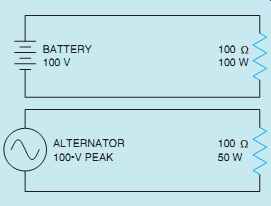
FIG. 10 Direct current compared with a sine wave AC current.

FIG. 11 The DC voltage remains at a constant value during a half cycle of AC voltage.
RMS VALUES
In FIG. 10, a 100-V battery is connected to a 100-O resistor. This connection will produce 1 A of current flow, and the resistor will dissipate 100 W of power in the form of heat. An AC alternator that produces a peak voltage of 100 V is also shown connected to a 100-O resistor. A peak cur rent of 1 A will flow in the circuit, but the resistor will dissipate only 50 W in the form of heat. The reason is that the voltage produced by a pure source of direct current, such as a battery, is one continuous value (Fig. 11). The AC sine wave, however, begins at zero, increases to the maximum value, and decreases back to zero during an equal period of time. Since the sine wave has a value of 100 V for only a short period of time and is less than 100 V during the rest of the half cycle, it cannot produce as much power as 100 V of DC.
The solution to this problem is to use a value of AC voltage that will produce the same amount of power as a like value of DC voltage. This AC value is called the RMS, or effective, value. It is the value indicated by almost all AC voltmeters and ammeters.
RMS stands for root-mean-square, which is an abbreviation for the square root of the mean of the square of the instantaneous currents. The RMS value can be found by dividing the peak value by the square root of 2 (1.414) or by multiplying the peak value by 0.707 (the reciprocal of 1.414). The formulas for determining the RMS and peak values are RMS = peak x 0:707 peak = RMS x 1:414
AVERAGE VALUES
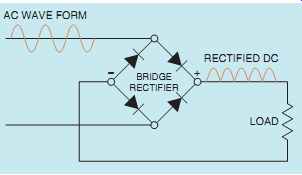
FIG. 12 The bridge rectifier changes AC voltage into DC voltage.
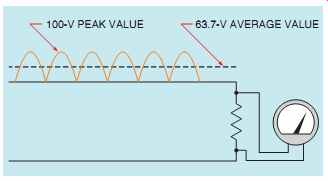
FIG. 13 A DC voltmeter indicates the aver age value.
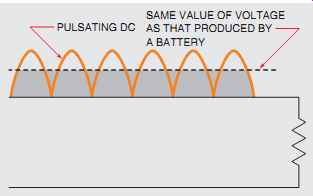
FIG. 14 The average value produces the same amount of power as a
non-pulsating source of voltage.
Average values of voltage and current are actually direct current values. The average value must be found when a sine wave AC voltage is changed into DC with a rectifier (Fig. 12). The rectifier shown is a bridge type rectifier that produces full wave rectification. This means that both the positive and negative half of the AC wave form are changed into DC. The average value is the amount of voltage that would be indicated by a DC voltmeter if it were connected across the load resistor. The average voltage is proportional to the peak, or maximum, value of the wave form, and to the length of time it is on as compared with the length of time it is off (Fig. 13). Notice in FIG. 13 that the voltage wave form turns on and off, but it never changes polarity. The current, therefore, never reverses direction. This is called pulsating direct current. The pulses are often referred to as ripple. The average value of voltage will produce the same amount of power as a non-pulsating source of voltage such as a battery (Fig. 14).
For a sine wave, the average value of voltage is found by multiplying the peak value by 0.637 or by multiplying the RMS value by 0.9.
RESISTIVE LOADS
In direct current circuits, there is only one basic type of load, which is resistive. Even motor loads appear to be resistive because there is a conversion of electrical energy into mechanical energy. In this type of load, the true power, or watts, is the product of the volts times the amps. In alternating cur rent circuits, the type of load can vary depending on several factors. Alternating current loads are generally described as being resistive, inductive, or capacitive depending on the phase-angle relation ship of voltage and current and the amount of true power produced by the circuit. Inductive and capacitive loads will be discussed in later Sections.
Resistive loads contain pure resistance, such as electric heating equipment and incandescent lighting. Resistive loads are characterized by the following:
1. They produce heat.
2. The current and voltage are in phase with each other.
Any time a circuit contains resistance, electrical energy will be changed into heat.
When an AC voltage is applied to a resistor, the current flow through the resistor will be a copy of the voltage (Fig. 17). The current will rise and fall at the same rate as the voltage and will reverse the direction of flow when the voltage reverses polarity. In this condition, the current is said to be in phase with the voltage.
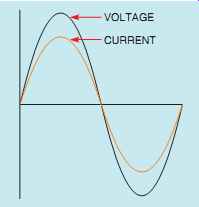
FIG. 17 In a pure resistive circuit, the voltage and current are
in phase with each other.

FIG. 18 Power in a pure resistive AC circuit.
POWER IN AN AC CIRCUIT
True power, or watts, can be produced only when both current and voltage are either positive or negative. When like signs are multiplied, the product is positive (+ x + = -,or + x - = -), and when unlike signs are multiplied the product is negative (- x + = - ). Since the current and voltage are either positive or negative at the same time, the product, watts, will always be positive (Fig. 18).
SKIN EFFECT IN AC CIRCUITS

FIG. 19 In a DC circuit, the electrons travel through the entire
conductor.
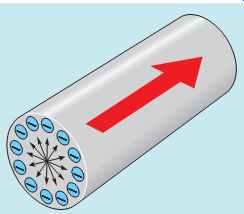
FIG. 20 In an AC circuit the electrons are forced to the outside
of the conductor. This is called skin effect.
When current flows through a conductor connected to a source of direct current, the electrons flow through the entire conductor (Fig. 19). The conductor offers some amount of ohmic resistance to the flow of electrons depending on the type of material from which the conductor is made, its length, and its diameter. If that same conductor were connected to a source of alternating current, the resistance of the conductor to the flow of cur rent would be slightly higher because of the skin effect. The alternating current induces eddy cur rents into the conductor. These eddy currents cause the electrons to be repelled toward the outer surface of the conductor (Fig. 20). This phenomenon is called the skin effect. Forcing the electrons toward the outer surface of the conductor has the same effect as decreasing the diameter of the conductor, which increases conductor resistance. The skin effect is proportional to the frequency. As the frequency increases, the skin effect increases. At low frequencies, such as 60 Hz, the skin effect has very little effect on the resistance of a conductor and generally is not taken into consideration when computing the size wire needed for a particular circuit. At high frequencies, however, the skin effect can have a great effect on the operation of the circuit.
To help overcome the problem of skin effect in high-frequency circuits, conductors with a large amount of surface area must be used. Grounding a piece of equipment operating at 60 Hz, for example, may be as simple as using a grounding rod and a piece of #6 AWG copper conductor. Grounding a piece of equipment operating at 20 MHz, however, may require the use of wide copper tape or a wide, flat, braided cable. Braided cable is less affected by skin effect because it contains many small conductors, which provides a large amount of surface area.
SUMMARY
• Most of the electrical power generated in the world is alternating current.
• Alternating current can be transformed and direct current cannot.
• Alternating current reverses its direction of flow at periodic intervals.
• The most common AC wave form is the sine wave.
• There are 360° in one complete sine wave.
• One complete wave form is called a cycle.
• The number of complete cycles that occur in one second is called the frequency.
• Sine waves are produced by rotating machines.
• Frequency is measured in hertz (Hz).
• The instantaneous voltage at any point on a sine wave is equal to the peak, or maximum, voltage times the sine of the angle of rotation.
• The peak-to-peak voltage is the amount of volt age measured from the positive-most peak to the negative-most peak.
• The peak value is the maximum amount of voltage attained by the wave form.
• The RMS value of voltage will produce as much power as a like amount of DC voltage.
• The average value of voltage is used when an AC sine wave is changed into DC.
• The current and voltage in a pure resistive circuit are in phase with each other.
• True power, or watts, can be produced only when current and voltage are both positive or both negative.
• Resistance in AC circuits is characterized by the fact that the resistive part will produce heat.
• There are three basic types of AC loads: resistive, inductive, and capacitive.
• The electrons in an alternating current circuit are forced toward the outside of the conductor by eddy current induction in the conductor itself.
• Skin effect is proportional to frequency.
• Skin effect can be reduced by using conductors with a large surface area.
QUIZ
1. What is the most common type of AC wave form?
2. How many degrees are there in one complete sine wave?
3. At what angle does the voltage reach its maximum negative value on a sine wave?
4. What is frequency?
5. A sine wave has a maximum value of 230 V. What is the voltage after 38° of rotation?
6. A sine wave has a voltage of 63 V after 22° of rotation. What is the maximum voltage reached by this wave form?
7. A sine wave has a maximum value of 560 V. At what angle of rotation will the voltage reach a value of 123 V?
8. A sine wave has a peak value of 433 V. What is the RMS value?
9. A sine wave has a peak-to-peak value of 88 V. What is the average value?
10. A DC voltage has an average value of 68 V. What is the RMS value?
REAL-WORLD APPLICATIONS
1. You are an electrician working on an overhead crane. The crane uses a large electromagnet to pick up large metal pipe. The magnet must have a minimum of 200 VDC to operate properly. The crane has an AC source of 240 V. You are given four diodes that have a peak voltage rating of 400 V each. These diodes are to be used to form a bridge rectifier to convert the AC voltage into DC voltage. Is the voltage rating of the diodes sufficient? To the nearest volt, what will be the DC output voltage of the bridge rectifier?
2. You are a journeyman electrician working on a large office building.
The fluorescent lighting system is operated at 277 VAC. You have been instructed to replace the existing lighting ballast with a new electronic type that is more efficient. The ballast manufacturer states that the maximum peak operating voltage for the ballast is 350 V. Will the new electronic ballast safely operate on the building's lighting system?

